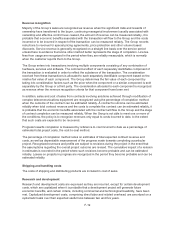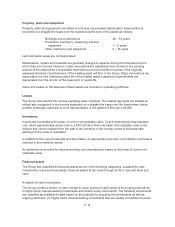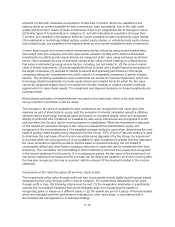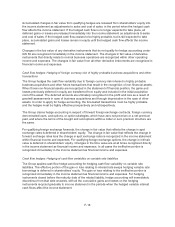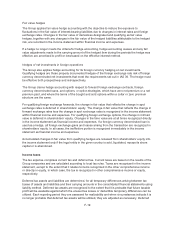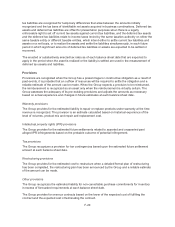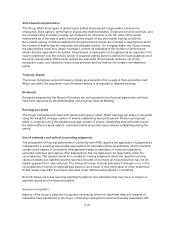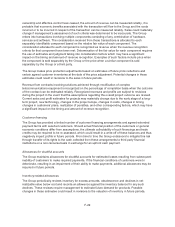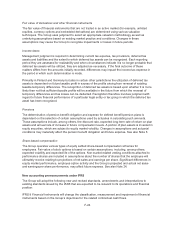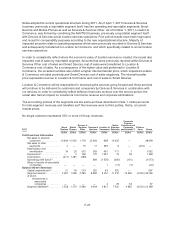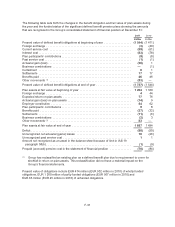Nokia 2011 Annual Report Download - page 232
Download and view the complete annual report
Please find page 232 of the 2011 Nokia annual report below. You can navigate through the pages in the report by either clicking on the pages listed below, or by using the keyword search tool below to find specific information within the annual report.ownership and effective control have ceased, the amount of revenue can be measured reliably, it is
probable that economic benefits associated with the transaction will flow to the Group and the costs
incurred or to be incurred in respect of the transaction can be measured reliably. Sales could materially
change if management’s assessment of such criteria was determined to be inaccurate. The Group
enters into transactions involving multiple components consisting of any combination of hardware,
services and software. The consideration received from these transactions is allocated to each
separately identifiable component based on the relative fair value of each component. The
consideration allocated to each component is recognized as revenue when the revenue recognition
criteria for that component have been met. Determination of the fair value for each component requires
the use of estimates and judgment taking into consideration factors which may have a significant
impact on the timing and amount of revenue recognition. Examples of such factors include price when
the component is sold separately by the Group or the price when a similar component is sold
separately by the Group or a third party.
The Group makes price protection adjustments based on estimates of future price reductions and
certain agreed customer inventories at the date of the price adjustment. Potential changes in these
estimates could result in revisions to the sales in future periods.
Revenue from contracts involving solutions achieved through modification of complex
telecommunications equipment is recognized on the percentage of completion basis when the outcome
of the contract can be estimated reliably. Recognized revenues and profits are subject to revisions
during the project in the event that the assumptions regarding the overall project outcome are revised.
Current sales and profit estimates for projects may materially change due to the early stage of a long-
term project, new technology, changes in the project scope, changes in costs, changes in timing,
changes in customers’ plans, realization of penalties, and other corresponding factors, which may have
a significant impact on the timing and amount of revenue recognition.
Customer financing
The Group has provided a limited number of customer financing arrangements and agreed extended
payment terms with selected customers. Should actual financial position of the customers or general
economic conditions differ from assumptions, the ultimate collectability of such financings and trade
credits may be required to be re-assessed, which could result in a write-off of these balances and thus
negatively impact profits in future periods. From time to time the Group endeavors to mitigate this risk
through transfer of its rights to the cash collected from these arrangements to third party financial
institutions on a non-recourse basis in exchange for an upfront cash payment.
Allowances for doubtful accounts
The Group maintains allowances for doubtful accounts for estimated losses resulting from subsequent
inability of customers to make required payments. If the financial conditions of customers were to
deteriorate, resulting in an impairment of their ability to make payments, additional allowances may be
required in future periods.
Inventory-related allowances
The Group periodically reviews inventory for excess amounts, obsolescence and declines in net
realizable value below cost and records an allowance against the inventory balance for any such
declines. These reviews require management to estimate future demand for products. Possible
changes in these estimates could result in revisions to the valuation of inventory in future periods.
F-22


